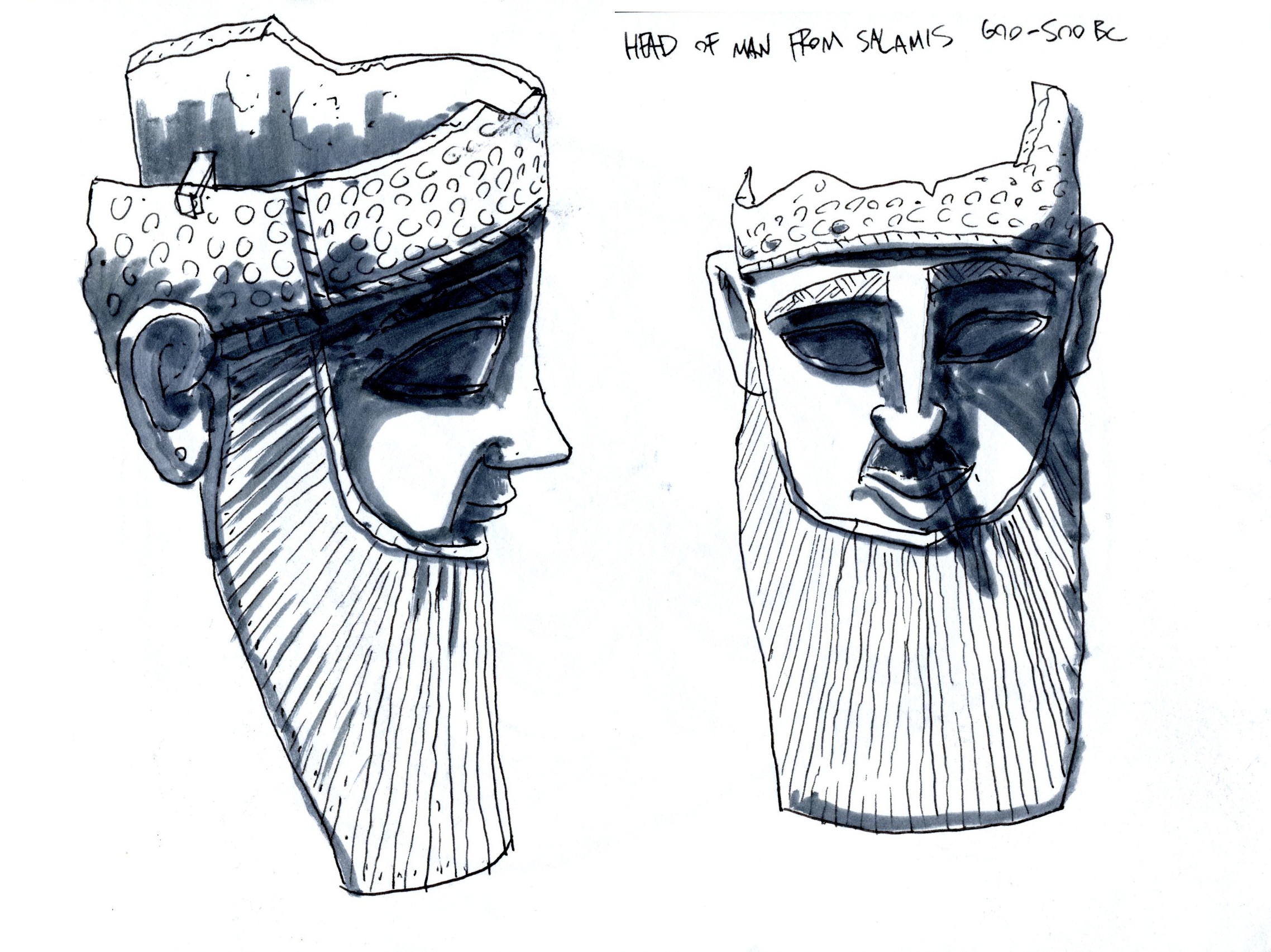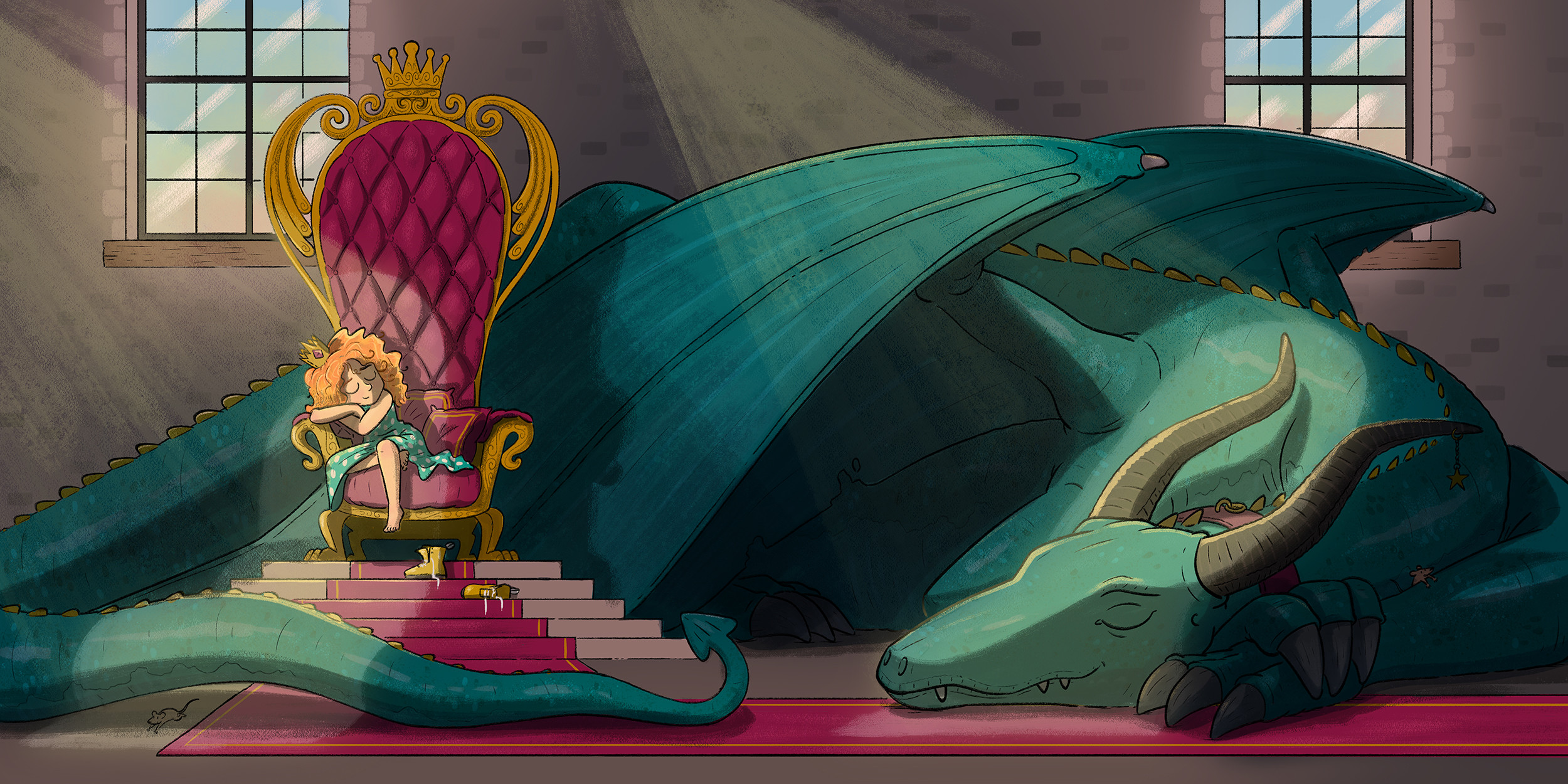
Joseph Wilkins
Children's Illustrator
How and why did you decide to pursue illustration as your career?
I grew up in a creative household, my father was a graphic designer and my mother an archaeological illustrator so a career in the creative industry was pretty much an inevitability! Art was always my strongest subject at school by far and earning a living out of creating art never occured to me to be an unusual thing to do. It was during my art foundation course that I discovered I preferred working to a brief as opposed to the more self directed world of fine art. I also had a strong interest in graphic design so Illustration provided me with a way of combining the two.
Did you attend art school or undertake any other formal artistic training?
I studied for a degree in Illustration at Falmouth School of Arts (now Falmouth University) down in Cornwall. I really enjoyed the course and it definitely helped prepare me for being a professional. I also absolutely loved living in such a beautiful part of the world. It felt like a strange move at the time, moving down to a small seaside town a long way from anywhere when most of my peers were heading to the Big City, but I don't regret it one bit.
Where do you currently live and where did you grow up?
I grew up in Oxford and moved back there after finishing my degree. At the beginning of 2020 we moved to Brighton to be nearer family as well as to be near the sea again. It's been tricky settling in somewhere new during a global pandemic but it's been great so far. There's a really good creative community here and I have a studio three minutes from the beach so I can go for a swim in the sea on my lunch break!
Which books from your own childhood really stand out?
Two books I remember vividly from childhood are Where The Wild Things Are by Maurice Sendak and The Tyger Voyage written by Richard Adams and illustrated by Nicola Bayley. Both books have a real dream-like quality and a sense of adventure but also danger, which is perhaps why they stick in the mind? I enjoy reading both these books to my own children now.
As I got older I devoured the Asterix comic books. I was slow learning to read and the comic format really helped me to develop a taste for it.

Where The Wild Things Are - Maurice Sendak

The Tyger Voyage - Richard Adams & Nicola Bayley
Describe your working technique and how you came to perfect it.
Back when I first started out I would draw everything by hand and use layout paper on a lightbox to refine the pencil roughs. I'd then scan these and tidy up and colour in Adobe Photoshop. Nowadays I work entirely digitally although in much the same way, using Photoshop layers in place of the layout pad to refine my artwork before colouring.
What piece of software or hardware could you not live without and why?
Taking the plunge and investing in a Wacom Cintiq display tablet was a real game changer for me. It allows me to be more versatile but also enables me to work much faster than I could using traditional media, which is very important when working professionally.
Do you keep a sketch book?
I do, although I don't use it as much as I should or would like! I still use a sketchbook to bash out ideas and rough thumbnails when planning a new image. These are often unintelligible to anyone else (and sometimes even myself)! but I find it a really good way of extracting ideas without being over precious and getting bogged down with one train of thought.
I also really enjoy going to museums with the sketchbook to draw. The Covid pandemic has rather put a halt to that recently but I hope to get back into it again soon. The Ashmolean and Pitt Rivers in Oxford, and The Natural History Museum in London are particular favourites. As I spend the vast majority of my time working digitally when in the studio it's really refreshing to go back to working on paper. Drawing quickly and expressively with no undo button is a really good reminder not to get too bogged down in details sometimes!

Sketch from the Ashmolean Museum

Sketch from Pitt Rivers Museum

Sketch from Ashmolean Museum
How long does it take on average for you to finish a spread, from initial sketch to final colour?
It really depends on the complexity of the subject matter. For a full spread it can take a day or so to thumbnail composition ideas and produce a first rough sketch. Final colour artwork can take 1-2 days but again this really depends on the complexity of the image.
What do you hope children take away from your drawings?
To me it's important to try and create a world that children want to inhabit. The books that I enjoyed the most as a child are the ones which seemed to create a world in which you felt like you could step into. I try to include details in my work that give the viewer plenty to explore. I aim to create artwork that there's always new things to find each time you view it. That way the image never feels stale or tired.
What do you do in your spare time?
We have two young children so most of my spare time is taken up by them! Otherwise I'm a keen cyclist and do my best to get out on long rides exploring the Sussex countryside at the weekends.
How important is it for you to be part of a creative community of people?
For me personally, it's really important. I've worked in shared studio space for most of my career. Being around other creative people all day really helps in so many ways. There's always a certain amount of cross pollination when you share a workspace with other people, be that ideas, technical help or even work. It doesn't have to be other illustrators either, creatives working in other fields open the doors for all sorts of potential collaborations and I find that very exciting. I find renting studio space orso helps massively with discipline by creating separate spaces between work and home. I find this is much more productive.
What does a typical day in the studio look like for you?
Cycle to studio > Tea > Check emails > Write to do list > Draw > Tea > Draw > Swim in the sea > Lunch > Coffee > Draw > Tea > Draw > Cycle home > Repeat
Share your favourite piece of artwork from your portfolio and walk us through its creation.
My favourite piece in my portfolio is probably the sleeping dragon & princess artwork. This was a personal piece created during a gap in work so I decided to take time working on something that would really push me. I wanted to play with contrast in scale in the composition and also use colour and light to create atmosphere. I spent a long time experimenting with the tonal values in black & white before moving onto the colouring. I'm really pleased with how it came out.

Princess & Dragon
